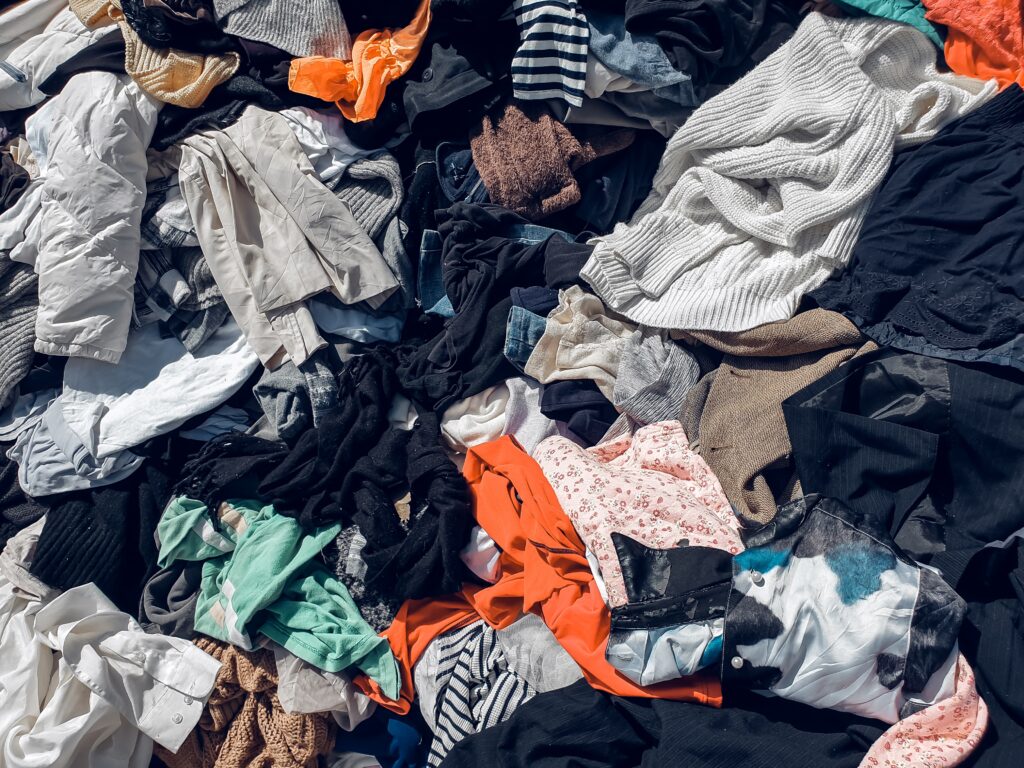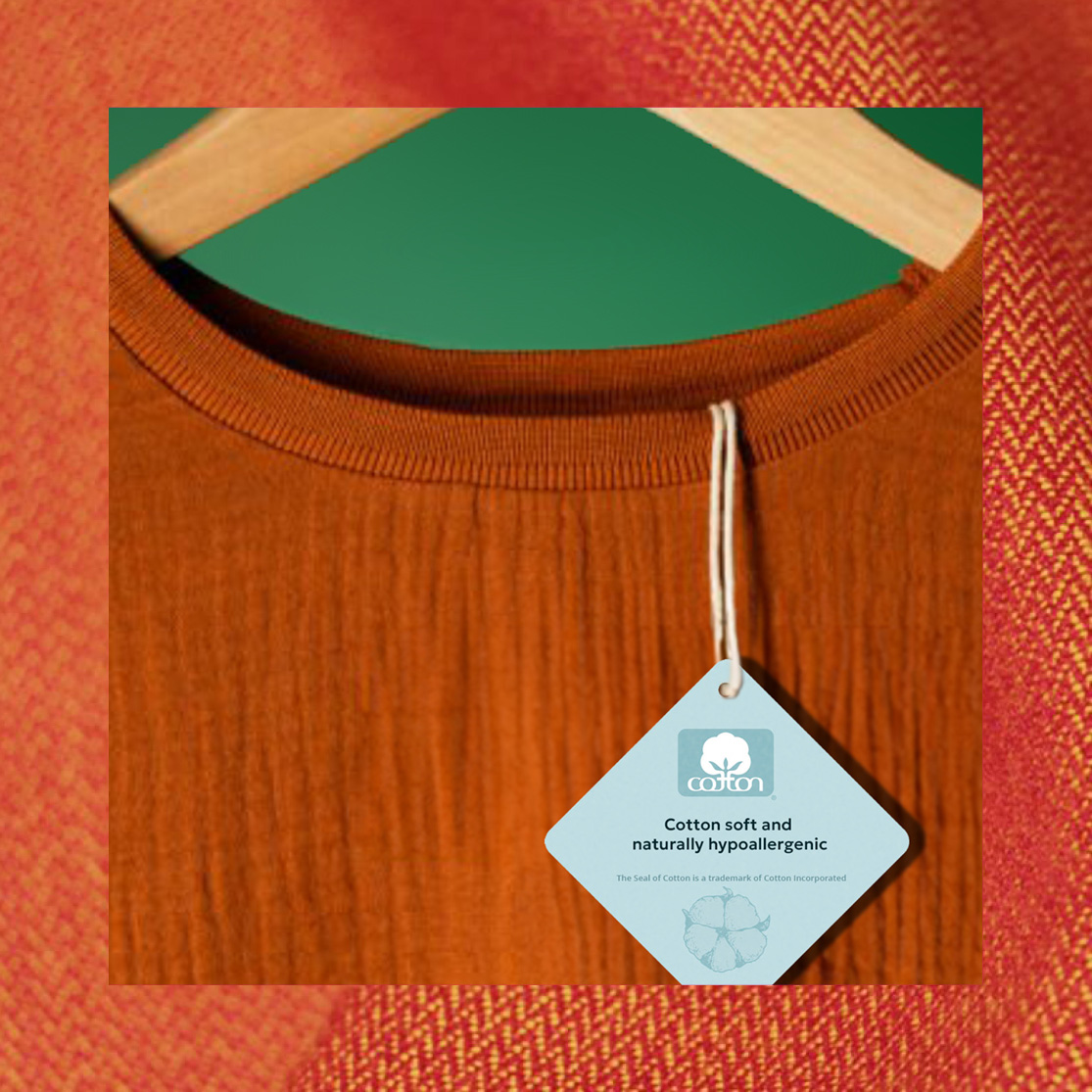In an industry grappling with textile waste, microplastic pollution, and a growing demand for end-of-life accountability, cotton offers something synthetics simply can’t: a natural return to the earth. This fiber is not only incredibly versatile, excelling in a wide range of apparel and textile applications, but also biodegrades relatively quickly in water and soil without releasing persistent plastic pollution1,2
The Unseen Impact of Synthetics
To understand why cotton’s biodegradability is so important, we first need to understand the problem with synthetics. Most synthetic fibers are derived from petrochemicals, making them a form of plastic. When a synthetic garment is discarded, it doesn’t just disappear.
But the problem starts long before a garment is thrown away. Every time a synthetic garment is washed, it sheds thousands of tiny plastic fibers, known as microplastics3.The National Oceanic and Atmospheric Administration (NOAA) defines microplastics as plastic fragments smaller than five millimeters, which are known to harm marine and aquatic ecosystems4. These microplastics end up in soil and waterways, potentially contaminating our food chain5.
The apparel industry is a significant contributor to this problem and contributes an estimated 14% of the total of all annual plastic leakage into the environment, primarily through macroplastic waste at the garment’s end-of-life6.
Cotton’s Natural Advantage
Cotton, on the other hand, offers a different story. As a natural, cellulosic fiber, it’s readily broken down by microorganisms in the environment. This means that at the end of its life, a cotton garment can be returned to the earth, where it will biodegrade naturally7.

Research has consistently shown that cotton fibers biodegrade faster and more thoroughly than synthetic fibers in aquatic environments like wastewater, freshwater and saltwater, and terrestrial environments like compost and soil1,2,7. A 2019 study found that cotton microfibers are expected to degrade in natural aquatic aerobic environments whereas polyester microfibers are expected to persist in the environment for long periods of time1. A 2010 study confirmed that all cotton samples were significantly degraded in compost environments and confirmed to be ‘compostable,’ while polyester fabric remained intact under both laboratory conditions and the compost environment2.
Remarkably, cotton microfibers biodegrade by up to 90% in just 40 days in wastewater treatment environments7. Even when treatments such as softeners, water repellents, and durable press are applied to cotton, the cotton still degrades to the same or higher degree than oak leaves7.

What This Means for Your Brand: A Strategic Advantage
For apparel brands and retailers, cotton’s biodegradability is more than just an environmental benefit; it’s a strategic advantage.
Addressing the Textile Waste Challenge
Textile waste is a monumental global issue, with millions of tons of clothing ending up in landfills annually. The U.S. Environmental Protection Agency (EPA) estimated that the generation of textiles in 2018 was 17 million tons, representing 5.8 percent of total municipal solid waste generation that year8.
Cotton, however, offers a tangible solution. Cotton-rich garments, when properly managed through composting or in natural environments, can return to the earth’s systems without leaving a lasting environmental footprint. This directly addresses growing consumer concerns about waste and aligns with the increasing demand for circular fashion models.
Preventing Microplastic Pollution at its Source
One of cotton’s most compelling features is its inherent freedom from microplastics. Unlike synthetic textiles, which shed tiny plastic fibers during regular washing and wear, cotton, as a natural plant-based fiber, does not contribute to this widespread environmental contaminant. This provides a clear and powerful message for brands genuinely committed to sustainability practices, setting them apart from competitors whose products might unintentionally contribute to microplastic contamination in our oceans, waterways, and ecosystems.
Meeting Evolving Consumer Demand for Sustainability
In fact, 75% of consumers say they would pay more for apparel made from natural fibers like cotton9. This trend is particularly pronounced among younger consumers, with 66% of young adults actively purchasing sustainable clothing, according to YPulse’s yearly Sustainability report10. Additionally, cotton is the favorite fiber among 66% of Gen Z consumers, and 61% of Gen Z consumers are willing to pay more for natural fibers such as cotton because they consider it to be softer, more comfortable, better quality, more natural, and longer lasting11.
By highlighting cotton’s biodegradability and its microplastic-free credentials, brands can deliver a clear, scientifically supported message of environmental responsibility. This empowers brands to educate their customers about the end-of-life benefits of cotton and its environmental profile, fostering trust and loyalty.
Boosting Brand Value and Crafting a Powerful Narrative
Cotton’s biodegradability and microplastic-free advantages offer a rich opportunity for brand storytelling. It naturally reconnects products with the natural world, emphasizing a strong commitment to natural elements and thoughtful consumption. Brands can create compelling campaigns around the ‘return to earth’ concept, showcasing how their cotton products are thoughtfully designed with the planet in mind, from cultivation to eventual disposal. This narrative resonates deeply with environmentally aware consumers, strengthening brand identity and positioning businesses as leaders in sustainable innovation.
The Seal of Cotton: Your Mark of Authenticity
For brands ready to make cotton’s sustainability story part of their identity, the Seal of Cotton trademark offers a powerful way to communicate authenticity to consumers. For consumers, the Seal of Cotton trademark is an emblem of credibility and trust. In fact, 79% of consumers find brands using the Seal of Cotton trademark to be trustworthy12. The Seal of Cotton trademark is a recognizable assurance for consumers who are considering a purchase — and this makes it a powerful brand marketing tool.

CottonWorks™ by Cotton Incorporated offers resources that highlight cotton’s role in advancing a more sustainable future for the textile industry. Explore comprehensive resources, including Cotton Today, to see how cotton supports sustainability goals and strengthens brand compliance across the value chain.
Page References
Zambrano, M. C., Pawlak, J. J., Daystar, J., Ankeny, M., Cheng, J. J., & Venditti, R. A. (2019). Microfibers generated from the laundering of cotton, rayon and polyester based fabrics and their aquatic biodegradation. Marine Pollution Bulletin, 142, 394-407.
Li, L., Frey, M., & Browning, K. J. (2010). Biodegradability study on cotton and polyester fabrics. Journal of Engineered Fibers and Fabrics, 5(4), 42-53.
Boucher, J., & Friot, D. (2017). Primary microplastics in the oceans: A global evaluation of sources. IUCN, Gland, Switzerland.
National Oceanic and Atmospheric Administration. (2016). What are microplastics? Link https://oceanservice.noaa.gov/facts/microplastics.html
Barrett et al. (2024). Quantification and Categorization of Macroplastics (Plastic Debris) within a Headwaters Basin in Western North Carolina, USA: Implications to the Potential Impacts of Plastic Pollution on Biota. Link
Kounina, A., Daystar, J., Chalumeau, S., Devine, J., Geyer, R. Pires, S., Uday Sonar, S., Venditti, R., Boucher, J. (2024). “The global apparel industry is a significant yet overlooked source of plastic leakage.”
Zambrano, M. C., Pawlak, J. J., Daystar, J., Ankeny, M., & Venditti, R. A. (2021). Impact of dyes and finishes on the aquatic biodegradability of cotton textile fibers and microfibers released on laundering clothes: Correlations between enzyme adsorption and activity and biodegradation rates. Marine Pollution Bulletin. Link
U.S. Environmental Protection Agency. (2020). Advancing Sustainable Materials Management: 2018 Fact Sheet. Link
Cotton Incorporated. (2024). Lifestyle Monitor™ Survey, n=5,000.
Cotton Incorporated. (2023). Seal of Cotton Survey, n=1,500.